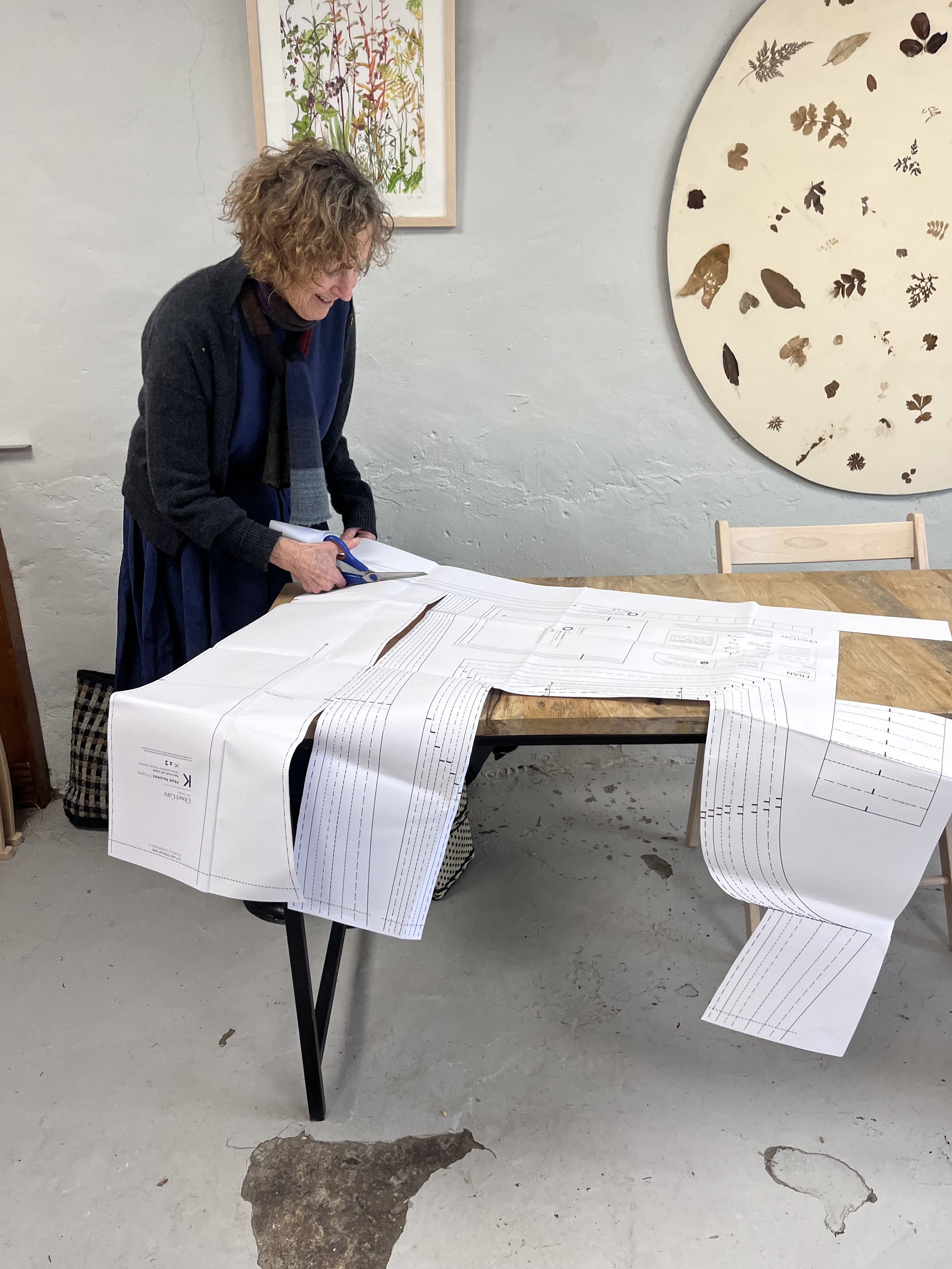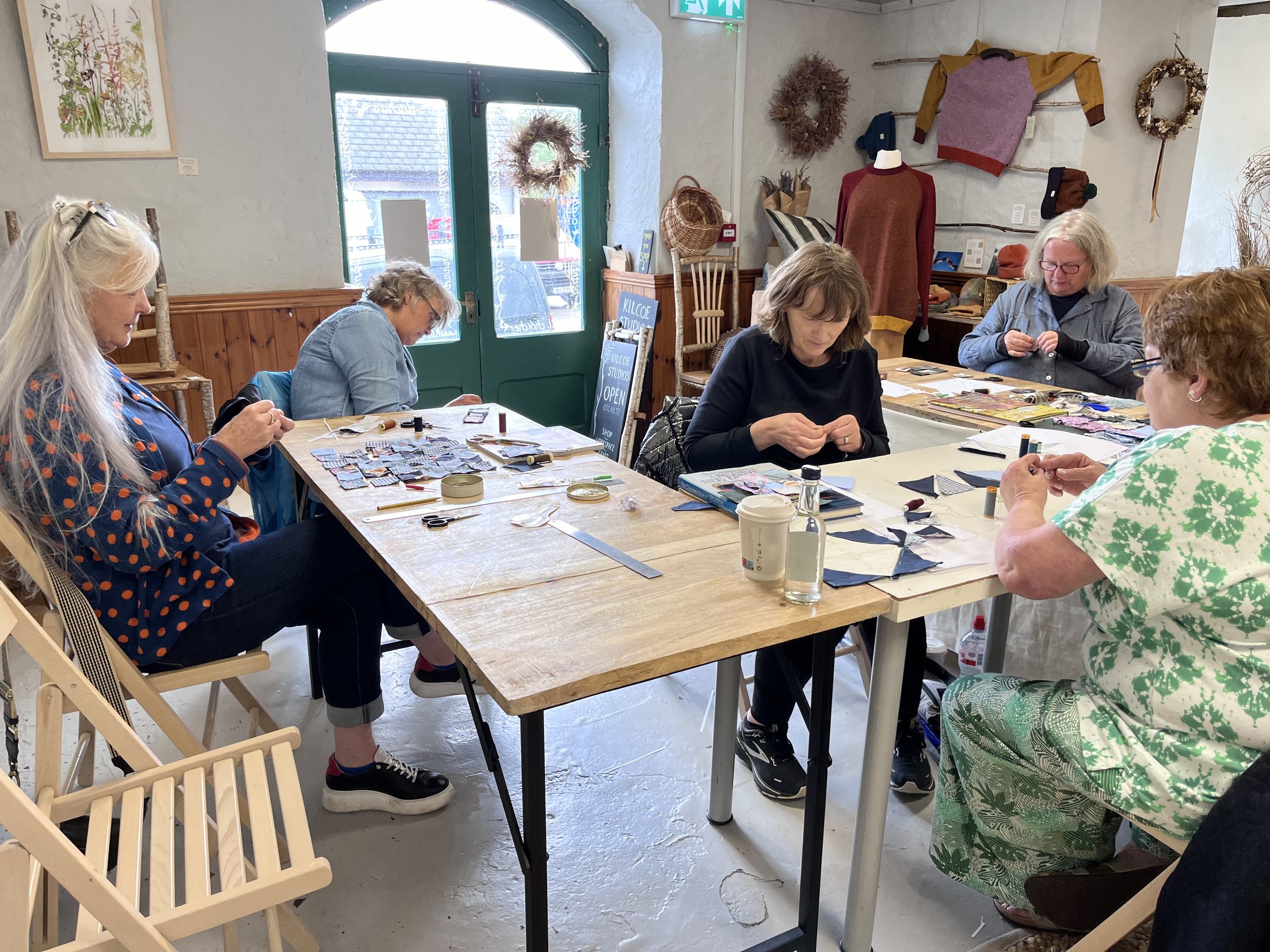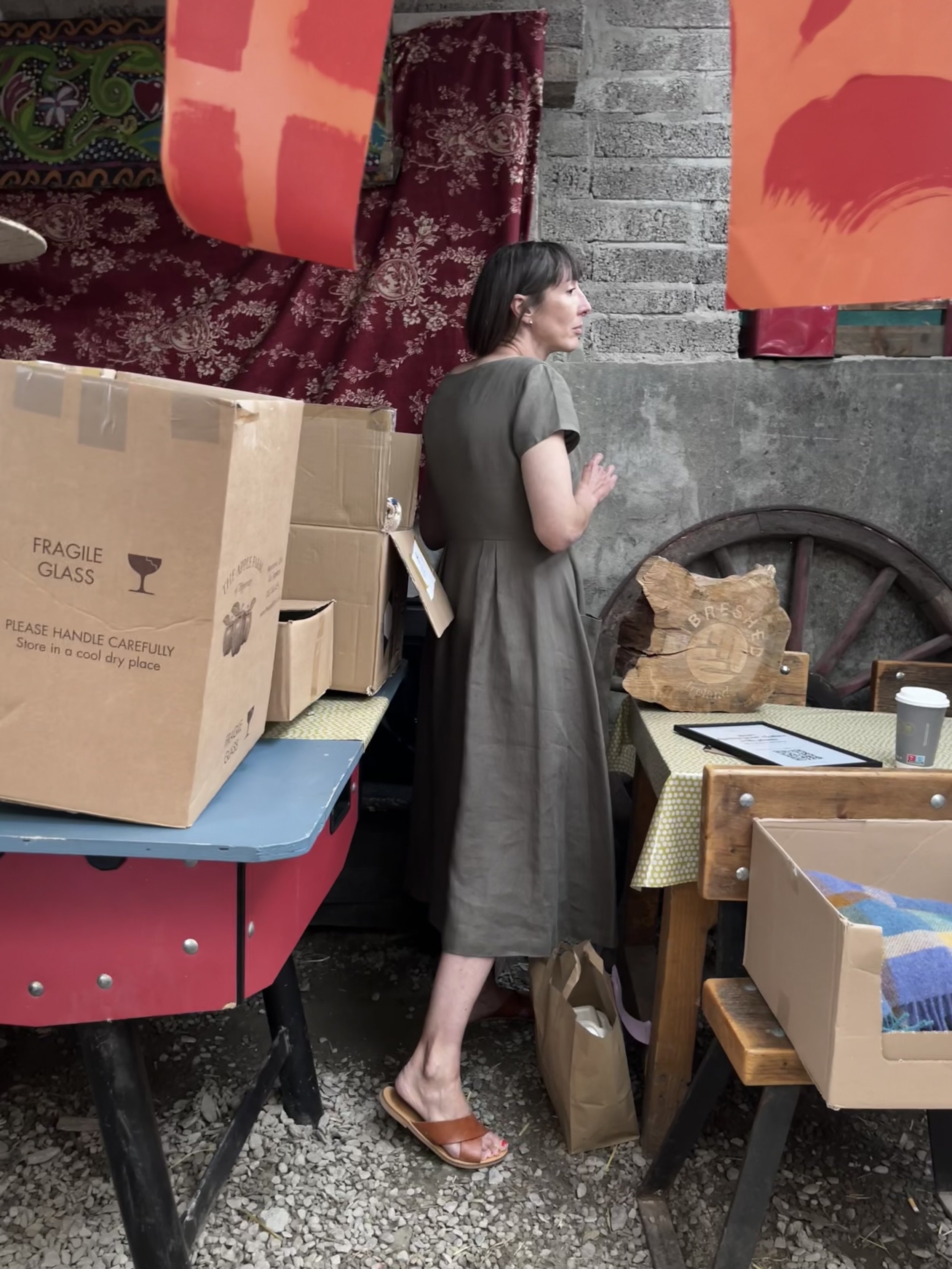How privileged am I to be included in the Spring edition of the Southern Star Greener Living supplement and to be featured amongst such esteemed company. Great to read about other local folk living and practising their values.
St Brigid's Day Sewing Workshop
Possibly the perfect way to spend our (relatively) new Irish Bank Holiday in February, celebrating our female saint, St Brigid, teaching the making pyjama bottoms (or pants or trousers, take your pick) with a group of focused and enthusiastic woman.
The Sewing Workshop was hosted by Sonia Caldwell, who also participated, at the vibrant Kilcoe Studio in Ballydehob Village, which has become an important hub for heritage craft in West Cork.
The project was simple enough to be suitable for beginners as well as those with sewing experience. We used the stylish Fran sewing pattern made by indie sewing pattern company Closet Core Patterns . The pattern was eminently customisable with side pockets, back pockets or no pockets (pockets were popular, obviously), a drawstring at the waist or straightforward pull-on elasticated band. Students were taught how to select the correct pattern size for body proportions and their preferred fit, how to match checks, to cut out the pattern and transfer markings to the fabric pieces, the sequence of garment construction and steps to complete the pyjama bottoms.
If you fancy joining a future sewing class, find out more here.
Pinwheels and Squares Patchwork Workshop 2024
Fancy a whirl on a pinwheel or prefer to stay squarely grounded? This was the choice for the participants of my August Patchwork Workshop, hosted by Kilcoe Studio in Ballydehob.
With a pre-cut fabric selection of large or small squares, large triangles or small, or a combination of any and all, the day was spent engaged in the craft of English Paper Piecing Patchwork, tessellating these shapes to arrange in pleasing patterns and all sewn by hand. The paper piecing technique uses paper shapes as templates which keeps the patches a uniform size and shape. This craft practice is ideal for beginners or those with sewing experience
Historically, patchwork was a way to utilise small remnants of fabric that otherwise would go to waste and create something useful, such as a bed covering. The fabrics I supplied were remnants and offcuts in Irish linen and cotton print, left over from my garments making, in accordance with a goal of zero waste.
The focus was on the mindful practice of hand work, using hand sewing skills. The emphasis of this workshop was to engage the eye and the hand in the rhythmic, meditative practices of hand sewing. It was about being in the present moment and enjoying the making. The intention was to focus on the process of making, rather than being concerned with a completed project.
If you’d like to know about future dressmaking sewing classes or patchwork workshops, find out more here.
Party Time! – and then what?
It's that season when there's a lot of spending to be done. The bombardment of discount offers for Black Friday and Cyber Monday is upon us and Christmas is only a few weeks away. If we're smart, we'll know what we want and have a clear plan to take advantage of the big brands and time our purchases for the price drop. There's always the temptation to overbuy (and over spend). The brands encourage us to believe that buying stuff will make us happy and loved. The messages are about urgency – 30% off until Monday! - or scarcity – buy now before it's gone! - or appeal to our budgeting logic – buy 3, get 1 free! We can end up with a surplus of things we didn't want.
When it comes to high street clothing labels it's about convincing us we need something new to wear for those special day. Christmas jumpers are rather bewildering. I'd like to think these novelty garments are stored and brought out again and again for the annual wearing, but I'm not sure that's the reality - who has the space, anyway? What's the likelihood they end up in the bin with the wrapping paper and turkey carcass? Or get donated to SVP where there's probably no space to store them for the 11 months until they are relevant again, so end up getting shipped in huge bales to Africa for re-sale – yes, to Africa. I mean, how are Ghanaians going to re-sell our cast off Christmas jumpers? In Spring!
Each time we buy something novel, we then have to figure out what to do with it for the rest of its life. Giving or throwing it away simply removes it from our periphery and shifts responsibility elsewhere. To landfill or to Africa. There is no 'away'. Away is always somewhere and everywhere. So then I went and decided to make a party dress for Christmas.
As you know, my prices aren't low, they reflect the quality of materials and quantity of time that goes into the garments. A dress may be initially chosen with a particular event in mind, which is gorgeous. It's important to feel appropriately attired on these occasions; to know we are presenting our best selves as well as feeling comfortable over the course of the day. We may even have had this conversation between ourselves, you and me, where I re-iterate that you will wear it again, won't you, you're not going to keep it for 'good'? Almost all of the pieces I make may be worn day to day. It's so important to me, and the environment, that we get real usage from our clothes.
Making cloth and then turning it into clothing takes time. Cloth and clothing used to hold its value and people would leave their linens and clothes in their will. Textiles weren't thrown out when they were finished with, they were passed on, repaired and repurposed, because they were valuable. It's only in very recent history, just the last few decades, that commerce has socialised us to afford a constant supply of new fashions and not to think about the social and environmental true cost. This leads to an unfathomable amount of clothing being discarded every year and I venture, a loss of pleasure that the clothing in our wardrobes might bring, because, where is the meaning? The moment of buying, might be the high point of the experience with the item and the relationship goes downhill from there. A connection has been lost in today’s way of acquiring and wearing clothes, it seems to me.
If you're reading this, I know you are pretty much thinking about these things the same way as I am. You'll know, I use natural fibre fabrics and I'm careful where they are sourced. Buttons are of natural materials, corozo and mother of pearl and I sew with cotton thread. There's a lot of hand sewing involved and often some fittings. These things take time. It's my hope that the clothes I make for you endure and serve you for a long time. It's all about having a minimal impact on the earth at the end of the day. They look so much nicer than the polyesters, the acrylics and the nylons! Nature is kinder against the body, too.
So yes, I made a party dress for Christmas, however it's potential for costs per wear stretches far into 2024 and beyond. The same goes for any of the blouses, skirts and shirts you may choose. In the beginning,the garment maybe for a special day, but do please let it become a basic piece in your wardrobe, for a range of situations and all year round. Wear it out to dinner, for work, on the school run, to the supermarket. Change your earrings and wear it from daytime into the evening. Throw a jumper over it (the all-year-round kind of jumper) and go for a windy dog walk in January.
This bit is up to you. And me.
PS. Where I go, Sonny, our rescue collie goes, too.
Fibre of Our Being Fashion Show
The Fibre of Our Being Fashion Show was the culmination of a summer of textile fibre and clothing events, based around Kilcoe Studio, Ballydehob. Numerous Ireland based textile artists, designers, creators and makers were included. It took place late August in the legendary Levis’ Corner House in the village and was hosted by the unrivalled Maeve Higgins.
Here are some scenes from back stage.
Creative Director of Fibre of Our Being Festival, Sonia Caldwell and Ailbhe Quinn
Shioko is fitted for shoes
Leda dress with lace collar by Myffi O’Brien
Anna wear Suzi dress in elephant grey Irish linen
Adrienne wears Juliana dress in Wedgwood gingham
Shioko wears Leda dress in black Irish linen
Juliana dress with hand woven blanket throw































